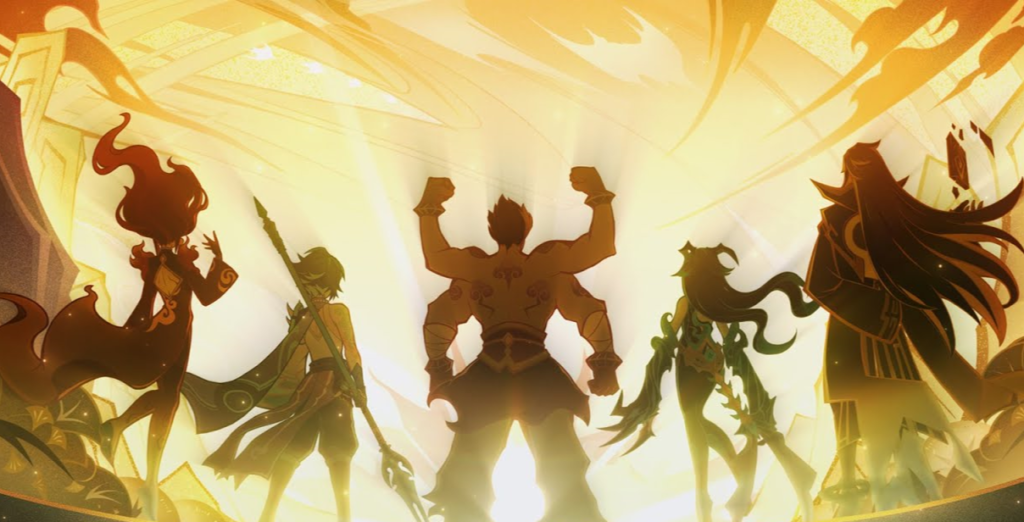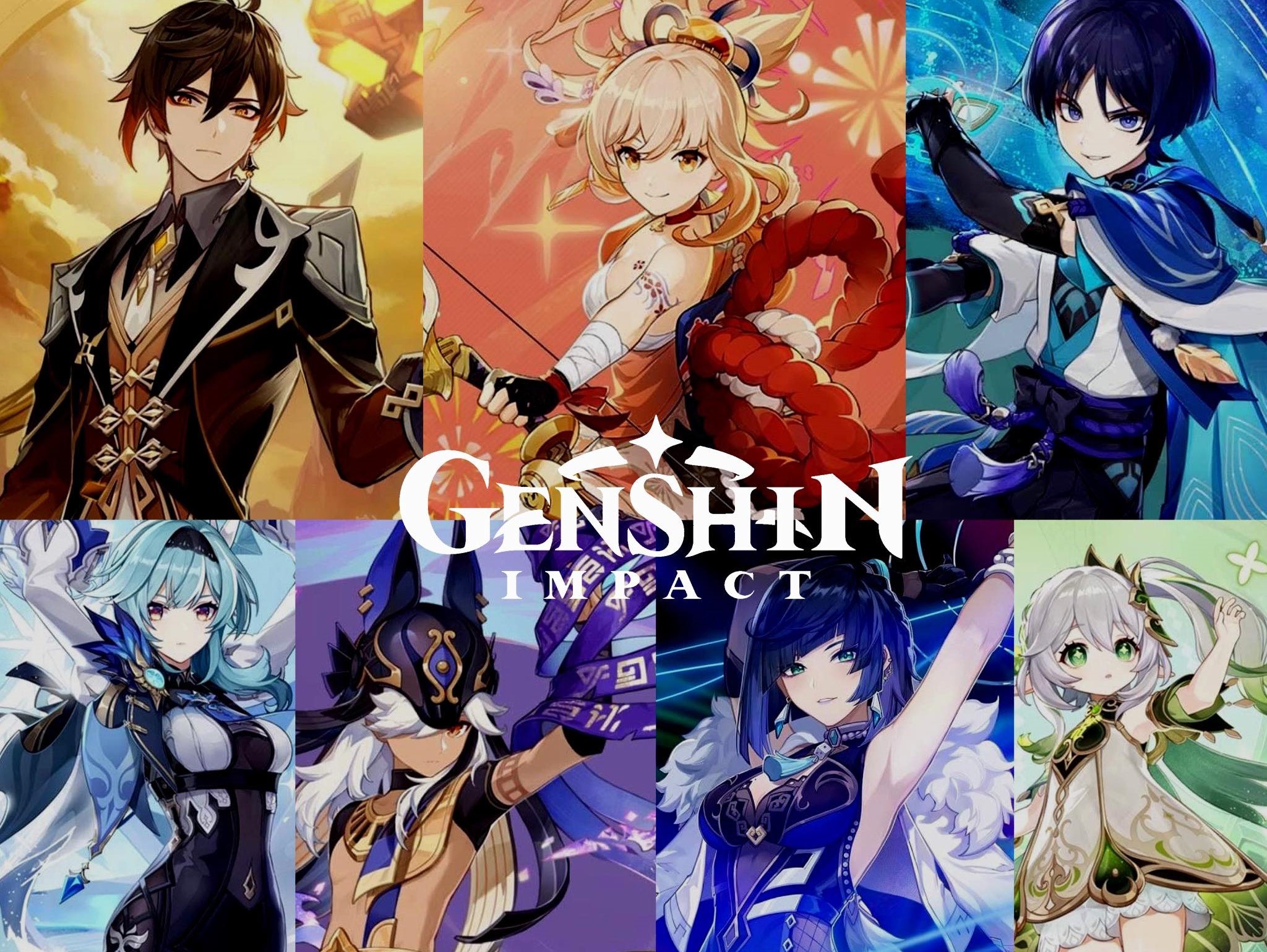The seven elements are the key components that the entirety of Genshin Impact is built upon. All beloved playable Genshin characters, each unique region of Teyvat, and even the entirety of the combat system is built around them. Now, another aspect of Genshin is making use of the elements with Genius Invokation TCG’s elemental reaction system.
The Genius Invokation TCG gameplay mode was teased by miHoYo quite some time ago but was only officially added in the Version 3.3 update. This gameplay mode allows players to compete in intense card duels against Teyvat’s many characters and even their fellow Travelers.

Related: Genshin Impact tier list: Best and worst characters ranked
Genshin’s latest gameplay mode comes with a lot of rules and specifics that Travelers will need to master to successfully play Genius Invokation TCG. One of the most important gameplay aspects is elemental reactions, which can play a key role in a player’s success in the game or even be the cause of their demise.
The basic functions of elemental reactions work the same in Genius Invokation TCG as they do when dishing them out around Teyvat. But while elemental reactions created throughout the world can produce varying amounts of damage, the elemental reactions produced in Genius Invokation TCG have specific statistics associated with them.
All elemental reactions in Genius Invokation TCG
Elemental reactions are the meetings between each of Genshin’s seven unique elements and the special effects that ensue when two of these elements interact. Every elemental reaction in Genius Invokation TCG functions on the same basic level as they do when applied through regular gameplay.
While all elemental reactions function similarly to what players are used to, they also, however, work somewhat differently in the special card game. Each elemental reaction in Genius Invokation TCG comes with unique damage bonuses and effects that are specific to this gameplay mode.
Vaporize (Hydro + Pyro)
When players successfully affect an opponent with Hydro and Pyro, Vaporize will be activated and two additional points of damage will be dealt against them.
Melt (Cryo + Pyro)
Cryo meeting Pyro will trigger Melt. This elemental reaction then increases the damage dealt by two.

Overloaded (Electro + Pyro)
When an enemy that is afflicted with either Electro or Pyro then has the other one of the two elements applied, Overloaded will be activated. Overloaded will deal two extra damage and will also force the other player to switch their active character to the next one when they have targeted the active character with this elemental reaction.
Electro-Charged (Electro + Hydro)
Electro-Charged is activated when Electro and Hydro meet. This will deal one extra point of damage against the opposing player and will also dish out one point of piercing damage to all other characters on the opponent’s team besides their active character.
Superconduct (Electro + Cryo)
The meeting between Electro and Cryo will trigger Superconduct. Superconduct will then deal one extra point of damage plus one point of piercing damage to the characters outside of the currently active one.

Frozen (Hydro + Cryo)
While the meeting of Hydro and Cryo does not deal any damage around Teyvat, the Frozen elemental reaction in Genius Invokation TCG functions differently in this regard. Frozen will still immobilize the enemy, which means that they won’t be able to move for a round, and it will also deal one extra point of damage.
When a Frozen opponent is attacked by a regular physical attack or a Pyro attack, an additional two points of damage will be dealt against them.
Burning (Dendro + Pyro)
The combination of Dendro and Pyro activates the Burning elemental reaction which then deals one extra point of damage. While this isn’t much, Burning does also create a Burning Flame at the end of the round to also deal one Pyro damage.
Quicken (Dendro + Electro)
The Quicken elemental reaction functions fairly similarly to Burning but with Electro instead of Pyro. Quicken also deals out just one point of extra damage but also creates a special Catalyzing Field that will deal one more point of damage against the opponents’ active character when players deal either Dendro or Electro damage and Quicken is already applied.

Bloom (Dendro + Hydro)
Dendro and Hydro work together to activate the Bloom elemental reaction. Bloom grants one extra damage point against the enemy but also creates a Dendro Core that increases the damage dealt against the opponent’s active character by two when Pyro or Electro damage is dealt against them and Bloom is already applied.
Swirl (Anemo + Pyro, Cryo, Hydro, or Electro)
The Swirl elemental reaction works with all elements that the Anemo element can pick up in its breeze, which includes all elements except for Dendro and Geo. When Swirl is activated in Genius Invokation TCG, it deals one point of elemental damage to all characters on the opponent’s team except for their active one.
The type of elemental damage that is dealt against your opponent will be that of whichever element is swirled in with Anemo.
Crystallize (Geo + Pyro, Cryo, Hydro, or Electro)
The Geo-based elemental reaction Crystallize is created when Geo meets Pyro, Cryo, Hydro, or Electro. It will not be activated with Anemo or Dendro.
Crystallize deals one extra point of damage and applies one shield point to the active character that will help protect them from harm.

Players can utilize elemental reactions to see great success when playing Genius Invokation TCG. But all opponents also have the capacity to apply any of the powerful elemental reactions, which means that players will always want to be paying attention to the moves that any player they are in a duel with makes.
Elemental reactions can suddenly make even the strongest players and their characters quickly lose all of their health. Thus, while is it certainly a powerful tool that players should make use of, it is also a deadly weapon they should be aware of at all times in case an opponent tries to utilize any elemental reaction against them.












Published: Dec 13, 2022 04:12 am